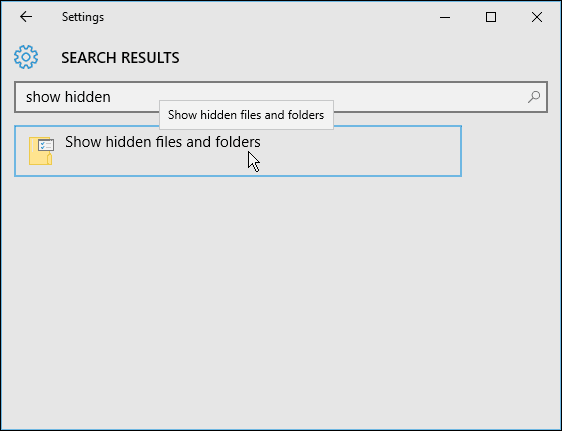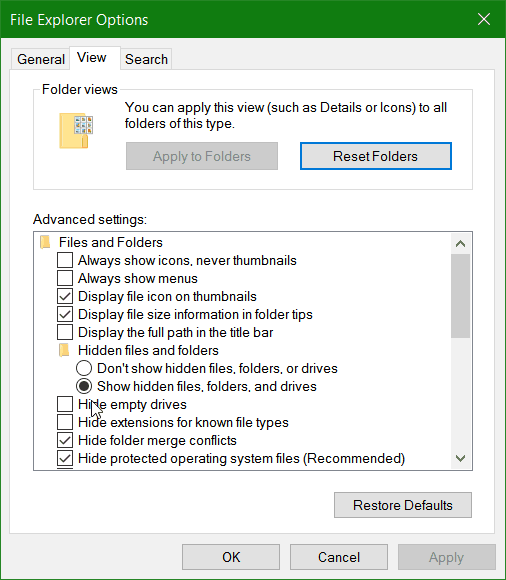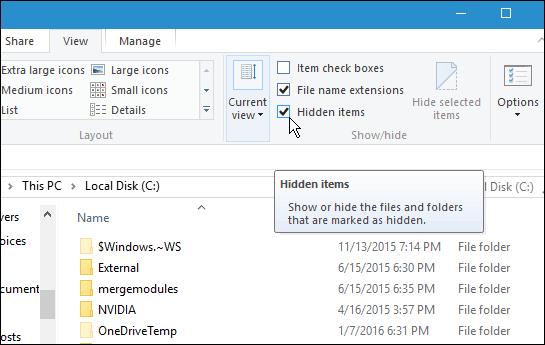How to Show Hidden Files and Folders in Windows 10

Microsoft hides important application files and folders in Windows to keep users from accidentally deleting them. But if you need access, here’s how to make them display.
Microsoft, by default, hides important application files and folders in Windows to keep users from accidentally deleting them. But if you’re tech-savvy and need to modify files for apps or are troubleshooting, there are times when you’ll need access to certain items that are hidden.
This is not a new practice in Windows 10 by any means. Certain files and folders have been hidden in all previous versions of Windows.
Show Hidden Files & Folders in Windows 10
It’s easier to get to the File and Folders options than it was with Windows 7. Of course, as with all things Windows, there are multiple ways to get to a particular spot. But here, I’ll show you how to do it using the Settings app, which is destined to be the new Control Panel from previous versions.
Launch the Settings app, and in the Search field, start typing: show hidden files and folders. By the time you get to “hidden,” you should see the result appear.


The File and Folder options dialog that you’ve seen in previous versions of Windows opens to the View tab. From there, select “Show hidden files, folders, and drives” and click OK.
Here you can also make hidden system files appear, but unless you’re troubleshooting or need to get to something deep in Windows 10, I recommend leaving them hidden.


Here’s a look at the Settings app in the upcoming Windows 10 Anniversary Update (due this summer), where I’ve set the new Dark mode.


Viewing Your Hidden Folders
If you use the steps shown above, hidden files and folders will always show up. However, you can use File Explorer to unhide them in a particular directory when needed. On the Ribbon, select the View tab and then check Hidden items in the Show/hide section.


This is a good tip to know when you need to access those hidden files and folders to do something. For example, if you want to save Windows 10 Spotlight lock screen pictures, you need to access hidden folders.
For more on using files and folders in Windows 10, please read our article on managing files and folders with File Explorer in Windows 10.
1 Comment
Leave a Reply
Leave a Reply







Kent Petersime
April 28, 2016 at 12:38 pm
Great tip but I happened to know it. I do have a problem with Calendar errors when Windows live Mail opens. I get an error message every time I open my mail that their is a problem with the calendar.
Since I don’t use this feature I have googled until I’m blue in the face trying to find an answer for Windows 10 with IE 11 installed. It was not doing this until about a month ago. One day probably after an unknown update I started getting the error message. Any help would be great.
Keep up the great work.
Kent